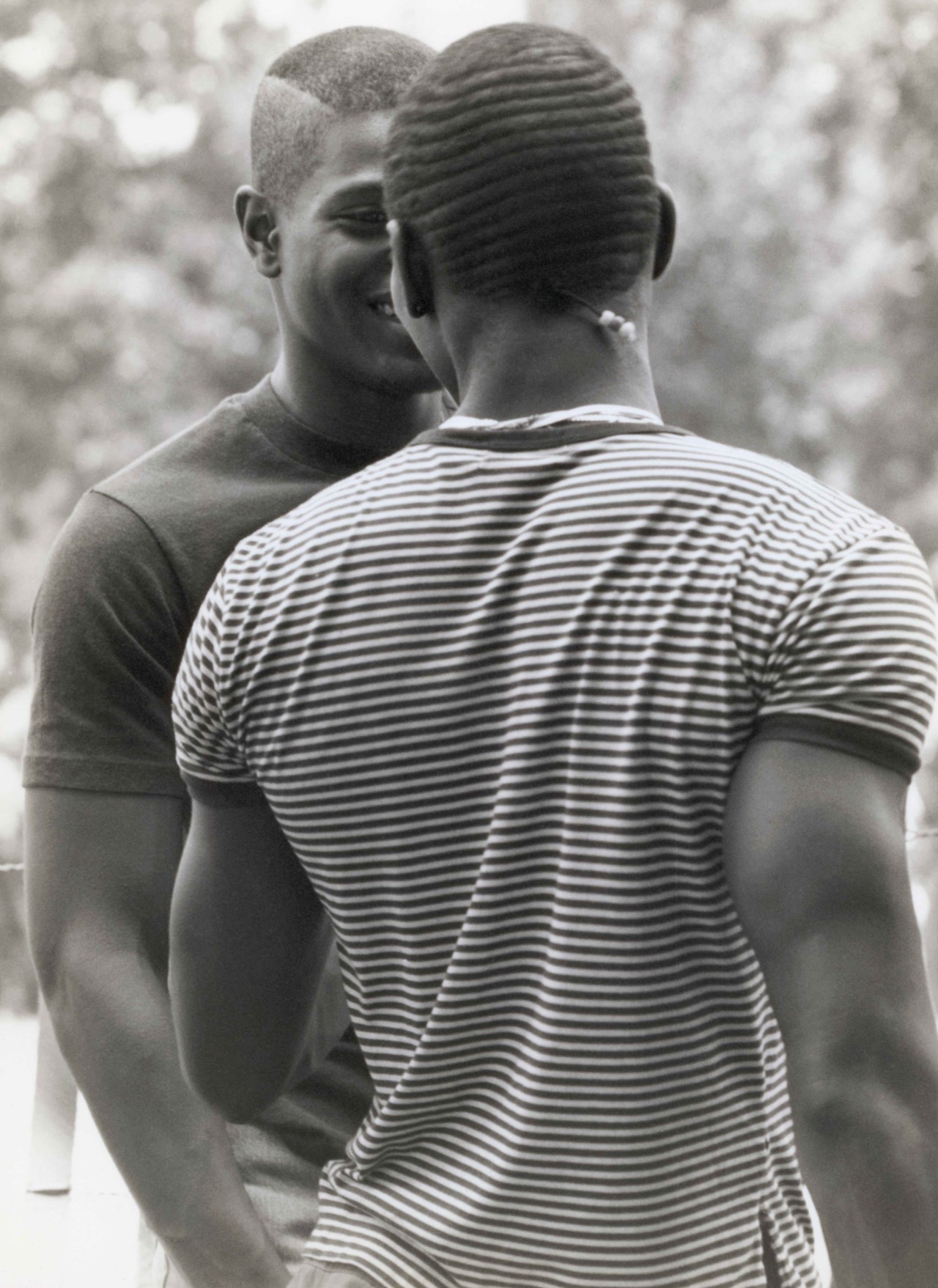A new exhibition showcases Patric McCoy’s decade-long photographic documentation of Chicago’s Black gay community during an important era in the city’s history
“Hey, take my picture!” young Black men called to Patric McCoy when they spotted him rocking a Minolta SLR camera like a gold medallion necklace on the streets of Chicago during the height of the 1980s street gang era. After decades of white flight, disinvestment, “urban renewal” and “benign neglect,” Black neighbourhoods had been abandoned and left to fend for themselves, creating a power vacuum filled by the city’s fabled street gangs. After heroin and crack hit the streets in the 70s and 80s, street gangs evolved into massive criminal syndicates. With thousands of members, gangs like the Vice Lords and the Gangster Disciples now controlled the streets, carving up Chicago into territories that could not be freely entered by rivals.
Against this backdrop, the Loop became an oasis, providing a neutral zone in the downtown commercial district where folks could come and go as they please. McCoy, then in his late thirties, biked everyday from his home on the South Side to his office in the Loop where he worked as an environmental scientist at the regional office of the Air and Radiation Division of the US Environmental Protection Agency (USEPA).
The 12-mile round-trip ride gave McCoy an insider’s view of his hometown during a major period of transition. With factories closing, many were now unemployed and struggling. Making things go from bad to worse, he saw the generational impact of the “Man-in-the-House” rule, which forbade government assistance to any household where a male over 18 lived. “The neighbourhoods were crumbling but at the same time people were out on the street, engaging with each other. It was actually a very safe environment and you could move through it,” McCoy tells AnOther. “The white people left and went to the suburbs and the Black people essentially claimed the downtown area, known as the Loop, a neighbourhood where they partied, shopped, and went to restaurants.”
McCoy first got to know the lay of the land back in the 60s, when he got an after school job downtown. “That’s when I became aware of how much activity was going on in public spaces,” he says, pointing to Chicago’s impressive public parks, which had become favoured cruising grounds hiding in plain sight.
As it so happened, the USEPA offices were located in the South Loop, just a block and a half away from the Rialto Tap, a now-defunct 24-hour bar catering to Black men. McCoy became a regular, getting to know the different scenes at the bar as they switched up from day to night, and meeting a wide array of patrons from all walks of life good and ready for their close-up. While other photographers hustled Polaroid portraits to patrons, McCoy had no interest in making people pay for the pleasure of a shared exchange. Instead he transformed the Rialto into his photo studio, creating thousands of portraits of men from all walks of life during an iconic era of Chicago history.
With the new exhibition Patric McCoy: Take My Picture at Wrightwood 659 in Chicago and the forthcoming book 38 Special, McCoy revisits his largely unseen archive of photographs made with singular aplomb, each snapshot a repository of soul built on mutual respect and admiration.
While the Rialto was one of the few places Black men could socialise amongst themselves without having to deal with the twin plagues of racism and homophobia, the community largely followed the maxim, “What’s understood doesn’t need to be explained.” “Men having sex with other men was very common but you didn’t see it. These people are all male-presenting and so didn’t want what they did behind closed doors to be evident in their persona,” McCoy says. “The concept of gay and the way the term came out in the activism did not catch on in the Black community for a long time. Most people used other ways of describing themselves because so much of why they were there in the South Loop was very situational. It was: ‘I'm just here doing this now but I could do something else later.’”
As a member of the community he was photographing, McCoy didn’t simply take a photograph and go; rather, he spent time with the people he met, enjoying the encounter and making the photograph as a shared keepsake. “I didn’t think of the people in my photographs as ‘other’,” he says. “I would meet people in the park, sit down, laugh and talk. And I precipitated [the encounter] by having the camera visible, and being willing to take their picture if they asked.”
McCoy was happy to photograph those who wanted to be seen without any expectation of a return, only to surprise them at a later time with a print. “Once my father saw I was interested in photography, he built a darkroom in his basement,” he says. “He didn’t live far from me, so I would ride my bike to his house, develop the film, print some of the pictures every night, carry them with me the next day, and give them out. I’d say, ‘Here, here’s your picture,’ and they were stunned that I would be giving them a really good photograph of themselves.”
Patric McCoy: Take My Picture is on show at Wrightwood 659 in Chicago until 15 July 2023. The crowdsourcing campaign for 38 Special runs until 1 August 2023.
